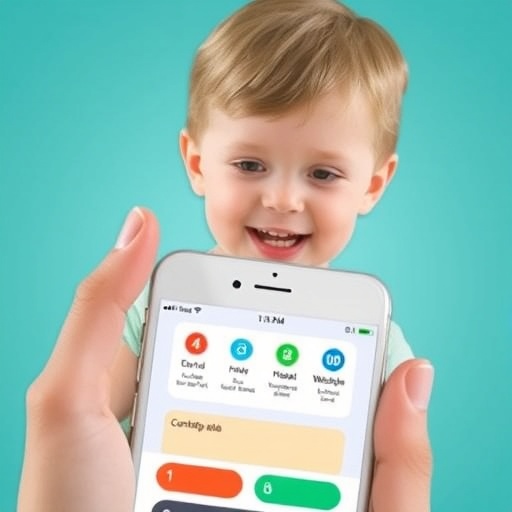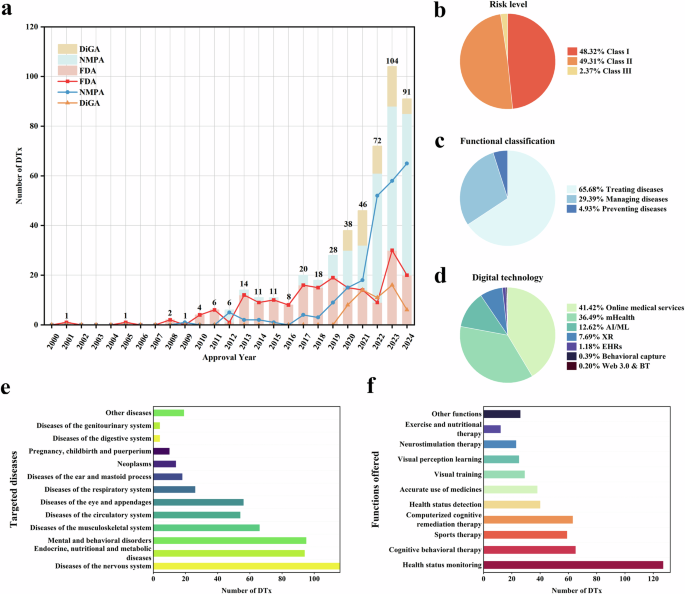Catenation between mHealth application advertisements and cardiovascular diseases: moderation of artificial intelligence (AI)-enabled internet of things, digital divide, and individual trust | BMC Public Health

Theoretical background and hypotheses
To illustrate technological adoption and usage, numerous theoretical models based on psychology, sociology, and consumer behavior have evolved. One of the most well-investigated theories in technology acceptance is the technology acceptance model (TAM) [25]. Liu et al. (2022) [26] noted that TAM mainly identified the influential variables that outline one’s intention to adopt innovative technologies. In the domain of technology acceptance, the diffusion of innovation theory is also essential and has been applied in diverse contexts [20]. Product attributes have been discussed in diffusion theory and the adoption timeline has been described [27, 28]. However, later, the unified theory of acceptance and use of technology (UTAUT) advanced the premises and added further factors related to social and infrastructure [29, 30]. Later, to increase its predictive capabilities, UTAUT2 incorporates three key constructs: Hedonic Motivation (HM), Price Value (PV), and Habit [31, 32]. Scholars [33, 34] have advocated using demographic variables (age, gender, and experience) to control the impacts of constructs on behavior intention and technology usage. Later, Farooq et al. (2017) [35, 36] presented the UTAUT3 framework as an expansion of the UTAUT2 model, which includes eight [8] determinants of technology acceptance and one new independent variable, Personal innovativeness in I.T. The UTAUT3 model is being employed in this study as a theoretical framework. The current study does not consider an individual’s pursuit of pleasure (hedonic motivation); assumedly, it does not impact health consulting. This study intends to enrich the UTAUT3 model by including one new moderator in the technology, acceptance, and adoption domain: individual trust. This is a crucial factor for a developing country in Asia like Pakistan. Previous research has explicitly emphasized that a lack of individual trust among people is a significant obstacle to adopting new technology in various countries.
mHealth mobile applications usage in digital health consultancy
Mobile health (mHealth) uses mobile devices, including cellular phones or tablets, to support healthcare services and practices [7]. With the emergence of more sophisticated AI-enabled technologies such as IoT, these services enable people to record and monitor their mobile gadgets’ health [11]. The mHealth has revolutionized digital health services by improving their efficacy in delivering healthcare information. In addition, mHealth applications enable health tracking and consultancy services through mobile devices in a streamlined manner [9]. Therefore, these applications are getting the public’s attention in Western countries. A sharp increase in their use and availability has been observed. For example, more than 300,000 mHealth applications are now available.
The increased use of mobile devices helps to integrate mobile and health services [37]. Mobile apps have altered how healthcare information is acquired and increased the effectiveness of services. By 2025, the mHealth apps business, according to the Zion Market study, would be worth more than 111 USD billion. Despite the infrequent usage of mHealth apps by individuals, particularly in the global south, perhaps due to perceived untrustworthiness [24], the successful adoption of these apps relies on their capacity to attract and retain users. For mHealth apps to be successful, it is crucial to comprehend users’ ongoing usage patterns. For this research, mHealth apps refer to software programs operated through smartphones that offer users access to health consultation, basic reminders, and tracking capabilities for health data. The mHealth helps encourage individuals’ [1] self-health understanding [2], increase the effectiveness of healthcare services, and [3] availability of health consultation.
While mHealth apps are popular, users rarely stick with them beyond the initial adoption [7, 11]. In empirical studies focusing on the ongoing use of health technology, researchers have analyzed how various factors influence users’ sustained engagement. Past research specifically explored the effects of healthcare technology self-efficacy [38, 39], resulting in aspirations and perceived risks on the continuous intention of elderly clients to use health apps. Research [9] has proposed that the consistent utilization of health apps is influenced by cognitive and emotional factors, as elucidated through the technology acceptability model. Researchers in recent studies have addressed the intention of users over forty to employ medical apps on mobile devices [11]. Such studies introduced a research model encompassing context and components for a comprehensive examination [40]. Other studies used the anticipation and investment models to examine how perceived usefulness, satisfaction, and confirmation affect the continual intention to use medical apps [37]. Limited research, nonetheless, has explored the impact of variables on users’ sustained usage of mHealth apps, drawing upon the extended UTAUT2 model.
The widespread use of mobile devices has encouraged the creation of several apps that provide users with various services [24]. Since more individuals emphasize their health, mobile applications have become essential for consumers to solve health issues1. Presently, mHealth apps can provide quicker means to disseminate information about patients’ diseases and provide expert health information in developing nations [15]. Examining features supporting strategies for modifying health behavior reveals that tracking healthcare information is pivotal in mHealth apps. Consumers prioritize personalized goal setting, notifications, reminders, and access to health consultations, which are the most significant aspects [13].
Research on performance and effort expectancy impact consumers’ actions while using eHealth and telehealth services is inconclusive [32]. For instance, a past study [41]discovered that perceived service quality and reliability substantially impacted people’s intentions to adopt mHealth services. Furthermore, minute evidence is available about AI-enabled mHealth from the perspective of middle-aged adults vulnerable to cardiovascular diseases [7]. At the same time, Scholars [6] found that effort expectancy enormously impacts customers’ behavioral intentions. The significance of the decision to use such consultancies offered across digital platforms is an indicator that requires fundamental consideration in investigating and planning the drivers of actual end-user adoption of a given innovation. The usage behavior of digital health consultancy services has been widely reported in recent ICT literature [42]. In established innovation acceptance and application models, behavioral intention is the strength of an individual’s inclination to engage in a particular behavior. It seeks to mirror acceptance-related mechanisms, mediating the relationships between various human or environmental factors and the actual use of a product or service. This study suggests that promoting digital health consultancy through mHealth apps may cultivate a favorable perception of the performance among middle-aged adults vulnerable to cardiovascular diseases. As a result, the hypothesis is posited that;
H1
Digital Health Consultancy mHealth Apps (Advertisements) positively influence the performance expectancy of using mHealth apps.
Performance Expectancy (PE)
Bhatnagr and Rajeshuse [35] use (PE) as the first element in their UTAUT2 model to show how customers react to new technologies. (PE) is the degree to which the individual feels that using specific technologies will make completing a task more accessible [20]. Performance expectancy refers to the advantages of employing emerging technologies for particular tasks [32]. When individuals perceive these technologies as beneficial, their inclination to adopt them increases. Furthermore, the healthcare industry harnesses mobile technology through mHealth apps, providing users with convenient communication facilitated by features such as flexibility and mobility [32]. Individuals utilizing mHealth apps can avail themselves of comprehensive health consultations and connect with qualified medical professionals conveniently and anywhere. Expatiating on the significance of mHealth apps in providing health consultation to middle-aged adults on cardiovascular diseases, the provider and recipient can efficiently communicate through devices like smartphones, tablets, or laptops. This method is quicker and more cost-effective than traditional consultations [37] on cardiovascular diseases. Earlier research using UTAUT and UTAUT2 to assess technology adoption found a positive link between (PE) and a person’s behavioral intention (BI) to embrace new technology. (PE) aids in developing satisfying health experiences [43]. Utilizing these apps for monitoring and consultation on cardiovascular diseases allows individuals to select skilled doctors for health consultations without traveling. Digital health consultancy proves highly convenient, especially when confronted with challenges such as queuing for registrations, transportation expenses, and prolonged waiting times for medical appointments. In other words, people may be satisfied if they derive utilitarian value from cutting-edge health consultancy and monitoring services for cardiovascular diseases. PE influences people’s willingness to accept new technologies favorably. Based on previous research, the following hypothesis is proposed:
H2
Performance expectancy to use mHealth apps positively influences the intention to use digital health consultancy mHealth apps.
Effort Expectancy (EE)
In the UTAUT2 model, (EE) is another impactful determinant of technology adoption [44]. The (EE) is the simplicity associated with utilizing technological advancements in products and services at a conceptual level. It assesses how well individuals can comprehend the effort required to adopt and apply new technologies [45]. Research suggests that a user’s (EE) significantly impacts their decision across several domains, like digital health [46] adoption of AI-driven chatbots [47], and augmented reality [48] to employ innovative services [45]. A recent meta-analysis of 35 UTAUT-based empirical studies has identified a profound relationship between (EE) and users’ intention to adopt any ICT-based innovation [49]. So, it can be assumed that patients will choose to use digital health consultancy on cardiovascular diseases, an ICT-based service, if they believe it involves less effort.
As a result, it can be hypothesized that:
H3
Effort expectancy to use mHealth apps positively influences the intention to use digital Health Consultancy Services.
Social Influence (SI)
Scholars [28] identified (SI) as the second most valuable element in determining customers’ BI regarding new products. SI refers to an individual’s perception of what significant people in their social circle would think if they embraced new technology [29, 49]. The concept of social influence is measured by the extent to which individuals are influenced by key figures, such as family and friends, who encourage the adoption of emerging technologies (Kessler and Schmidt-Weitmann, 2019) [18]. Social influence is among the most critical aspects that affect the use or rejection of mHealth apps. Most people lack profound knowledge of digital apps and are primarily influenced by the perspectives and behaviors of others, including friends, family, and coworkers. It’s important to note that users are sensitive to the influence of numerous others when assessing their satisfaction with online health consultations.
Previous research on technology acceptance has established its significant impact on individuals’ intention. to adopt new technologies. A meta-analysis showed a positive and significant correlation between social influence (SI) and user intention [49]. The connection between these factors in embracing ICT-based products was identified. In developing countries, where a joint family system is prevalent, individuals often depend on each other in various socioeconomic situations [19]. Past research advocated the critical role of social influence as a determinant of behavioral outcomes [50]. Especially in Asian cultures like Pakistan, social influence is essential in making decisions. For instance, Pakistan is a collectivistic society; people usually look to others for approval and acceptance of their actions. Based on the literature and settings of this study, it can be postulated that social influence will be a critical factor in outlining the use of mHealth applications for monitoring and consultation on cardiovascular diseases.
H4. Social influence positively impacts the intention to utilize mHealth apps for digital health consultancy.
Facilitating Conditions (FC)
The facilitating condition is described as the extent to which an individual considers that an organization or technical infrastructure is available to support the actions in question [43]. For instance, Reveilhac and Blanchard (2022) [20] characterized FC as the extent to which an individual perceives the accessibility of necessary infrastructure to support the integration of technological advancement. In digital health consultancy services, using mHealth is the perceived degree of technical support available to an individual to use mHealth applications [43]. Previous literature suggested that (FC) is an essential antecedent of the behavioral outcomes to accept an innovative product. For instance, Yang and Su (2020) [37] noted that people’s willingness to use digital technologies for health services is significantly impacted by enabling conditions [37]. Various studies have substantiated the favorable influence of (FC) on user behavior, particularly in the context of e-health services (Klerkx, 2021). We propose that middle-aged individuals vulnerable to cardiovascular diseases require sufficient facilitative conditions to adopt the mHealth consultation services. Consequently, we posit the following hypothesis:
H5
Facilitation conditions positively influence the intention to use digital health consultancy mHealth apps.
Price Value (PV)
PV is another crucial predictor of technology adoption [19, 43]. PV is the individual’s cognitive trade-off of the perceived benefit and the expense of purchasing that innovative product” on a conceptual level [46]. Prior studies in technology adoption have suggested that individuals will be more likely to adopt and employ technology if the advantages outweigh the costs [46]. PV can significantly affect the adoption pattern of middle-aged individuals vulnerable to cardiovascular diseases because mHealth digital health consultancy is a paid service. As a result, the following hypothesis is put forth:
H6
Price value positively influences the intention to use digital health consultancy mHealth apps.
Personal Innovativeness (PI)
Kessler and Schmidt-Weitmann (2021) identified personal innovativeness as a person’s inclination to test any innovation based on the innovation diffusion theory [18]. This study describes personal innovativeness as a patient’s willingness to employ e-consultation to a certain extent [17]. How swiftly an individual adopts information communication technologies is determined by the relationship between technology and the level of receptiveness to innovation [48]. Individual differences in their perceptions of the benefits and hazards of e-consultation can be explained by personal inventiveness. Individuals with greater innovativeness enjoy change and are likelier to obtain technological product information, thus;
H7
Personal innovativeness positively influences the intention to use digital health consultancy mHealth apps.
AI-enabled internet of things (IoT), digital divide, and individual’s trust
The Internet of Things (IoT) is a modern technology that can connect all things to a network without involving anyone [7]. A more straightforward explanation of an IoT device is that it can connect to the network to either monitor or transmit more data [8] In order to enhance service delivery to middle-aged individuals vulnerable to cardiovascular diseases, IoT allows users to connect and link numerous physical objects to the Internet. These interconnected items should be capable of computing and communication, encompassing social networks and mobile devices [11]. The Internet of Things (IoT) is a three-layer interactive process connecting people with networks, intelligent objects, and operational intelligence [51]. Using RFID and NFC technologies, the device is the primary and essential component, gathering data from large networks and intelligent items. The second layer, the connection, includes the leading network and gateway. The network provides the IP connection through various telecommunications infrastructures, while the gateway serves as a bridge between technologies and devices at the device layer.
IoT has many practical applications, from industrial and corporate IoT to manufacturing and commercial IoT, including intelligent buildings, smart cities, wearable technologies, innovative healthcare, smart homes, and farming. IoT applications are used in various sectors, including telecommunications and electricity. However, recent developments in artificial intelligence have advanced the IoT and increased the efficiency of these technologies. Some popular theories on technology adoption may not be applicable or fitting for analyzing individuals’ adoption of IoT devices. Numerous studies have investigated the challenges associated with deploying technology [17]. This study postulated that mHealth applications offering AI-enabled IoT might intensify the relationship between the advertisement and the intention to adopt digital health services. For example, an advertisement for digital health services informing the AI-enabled features can give a better impression of the performance of the mHealth applications.
Furthermore, the digital divide is a significant factor in inequality, encompassing issues related to internet access and a divide between those who can effectively use advanced communication tools, like smartphones, and those who cannot readily absorb new information [23, 52]. Zarour et al. (2020) [24] define trust as the perceived credibility and goodwill of a target of trust. Positive attitudes and beliefs about trust are closely interconnected, and both play a significant role in shaping the intention to trust [53, 54]. According to Arfi et al. (2021) [55], trust stands out as the most crucial factor influencing a patient’s inclination to embrace an electronic health system. Additionally, research on individuals seeking online health consultation revealed that trust in web-based technologies was more pronounced when the perceived risk factor was low [55]. Researchers looked into the crucial part that trust plays in people using electronic health services. Therefore, trust is vital to online technology advancement and lowers concerns about dangerous and fraudulent activity in the technical environment. In light of this, we propose the following hypotheses:
H8
AI-enabled Internet of Things (IoT) significantly moderates the relationship between digital health consultancy mHealth advertisements and performance expectancy to use mHealth apps.
H9
The digital divide significantly moderates the relationship between digital health consultancy mHealth advertisements and performance expectancy to use mHealth apps.
H10
Individuals’ trust significantly moderates the relationship between digital health consultancy mHealth advertisements and performance expectancy to use mHealth apps.
link







